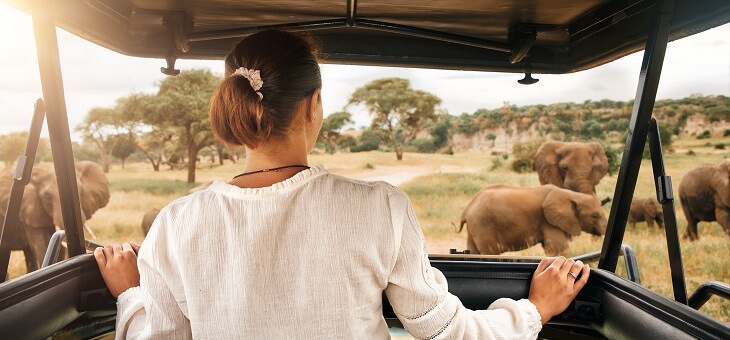Captive wildlife tourism has had a pretty bad rap lately, and probably with good reason.
Thai tiger temples, elephant experiences, lion walks, performing monkeys and hand feeding wild animals are constantly being exposed as little more than dollar-draining tourist traps and, not surprisingly, devastating for the animals.
The good news is there are still plenty of opportunities to see wildlife in the actual wild without sentencing the animals to a life of servitude. Here are some of our favourites.
Western Australia, Australia
It’s our largest state, and as such has plenty in the way of wildlife experiences but two of the best are quokkas on Rottnest Island and all the Coral Coast has to offer.
Read more: European Waterways one-of-a-kind cruise
First to Australia’s most Instagrammable animal, the quokka. It’s cute, it’s furry, it has almost no fear of humans.
They are also how Rottnest Island got its name because Dutch explorer Willem de Vlamingh thought they were giant rats and named the place t Eylandt ‘t Rottenest, or rat nest island in Dutch.
While they inhabit a few islands off the WA coast, they are most abundant on Rottnest Island and will willingly approach humans, although there are about a dozen reports of them biting each year, so be careful.
WA’s Coral Coast is a veritable smorgasbord of wildlife experiences.
You can choose from whale, sea lion, humpback whale and manta ray tours or just snorkel or dive on Ningaloo Reef, a World Heritage site. As it’s a migratory route for whale sharks, dolphins, dugongs, manta rays and humpback whales, the chances of a one-on-one wildlife encounter are high.
Read more: Your guide to the best drive experiences in the NT
Borneo
As the third-largest island in the world behind Greenland and New Guinea, Borneo provides wildlife experiences that cannot be seen anywhere else in the world.
With sun bears, proboscis monkeys, pygmy elephants and a vast array of birdlife as well as all the beaches you could ever want, Borneo is a wildlife lover’s slice of heaven.
There is a plethora of tours available and it’s worth doing a little research to find the best option to see animals in the wild.
And if you don’t see any orangutans in their natural habitat, there is always the Sepilok Orangutan Rehabilitation Centre where orphaned or injured animals are rehabilitated and returned to the wild if possible.
Their story is so compelling you might even find yourself reaching into your wallet for a donation, I know I did.
Just be aware that while Borneo has some stunning accommodation options it is still a tropical jungle. It’s hot, sweaty and full of insects. Pack appropriately.
Read more: Experience the magic of Magnetic Island
Namibia, Africa
There are plenty of opportunities to see animals in Africa, but I am choosing Namibia because more than 19 per cent of Namibia’s landscape is protected in some way or form – it was the first country to completely protect its entire coastline – so the chances of enjoying some wildlife in their natural habitat is high.
You may not immediately place Namibia’s landscape, but its towering dunes have been on the big screen in such movies as Mad Max Fury Road, The Sheltering Desert and the little cult gem The Gods Must Be Crazy.
For that classic parched African landscape of dry savannahs, it’s hard to go past Etosha National Park.
It has a salt pan so large it can be seen from space, but the wildlife is also out of this world.
The dry nature of the park works in tourists’ favour as animals can be easily found at the waterholes as they come in to drink. The park is home to elephants, rhino, leopards, giraffes and more than 340 species of birds.
Taking in all Etosha has to offer should take more than one day and there are plenty of accommodation options from huts to luxury hotels.
Wild Ass Sanctuary, India
I’m putting this one here for my own entertainment because I have the humour level of a 12 year old.
So saying Wild Ass Sanctuary out loud is funny but the sanctuary is actually doing a great deal of good work for conservation.
Located in the Little Rann of Kutch in the Gujarat state of India, the sanctuary covers almost 5000 square kilometres and is one of the last places the endangered Indian Wild Ass can be found.
But it’s not just about the asses. The sanctuary is also home to a variety of wildlife and offers safaris with the opportunity to spot nilgai (Asia’s largest antelope), desert foxes, wolves, hyenas and all the birds a bird watcher could want, from owls to flamingos.
If you enjoy our content, don’t keep it to yourself. Share our free eNews with your friends and encourage them to sign up.

